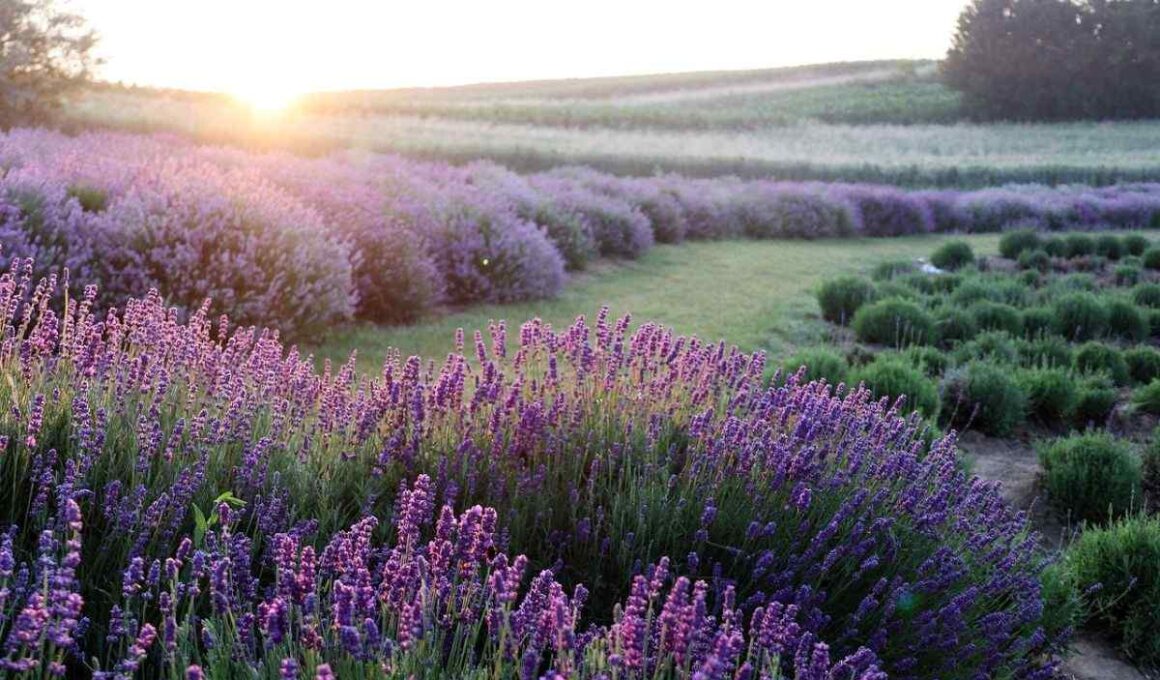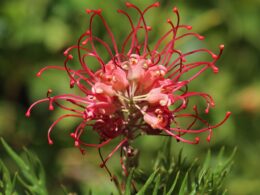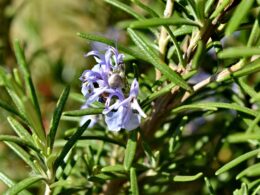What Is Lavender? Species and Characteristics
Before we discuss how to grow lavender from seed, let’s get to know it a little. Lavender (Lavandula) is a genus of perennial flowering plants native to the Mediterranean region. There are 41 species of lavender, including Lavandula angustifolia (true lavender). Its delicate purple blooms are beloved for their distinctive scent, which is commonly used in perfumes and other fragrances.
The heart-shaped leaves of the lavender plant are also prized for their antioxidant and antibacterial properties. Lavender is also known to have calming effects, and its soothing fragrance is frequently used as a natural remedy for stress and insomnia.
Although it was originally cultivated in Southern Europe, today lavender plants can be enjoyed by gardeners all over the world. They’re popular as decorative plants and in the form of essential oil. Do you want to enjoy the gentle scent of homegrown lavender? Let’s see how it’s done!
When Is the Best Time to Sow Lavender Seed?
Lavender seed can be sown indoors from late winter to early spring. The best time to sow is about eight weeks before the last frost date in your area, so that the seedlings will be big enough to plant out when the weather warms up.
If you’re sowing lavender seed outdoors, wait until after the last frost has passed. Sow the seeds in mid-spring, as soon as the soil can be worked. In that case, you’ll need to prepare them for planting by cold stratification during the winter months. This means exposing the seeds to moist and cool conditions (like placing them in a refrigerator) for 3-6 weeks after planting.
How to Grow Lavender From Seed in Your Garden?
So, how to grow lavender from seed? Sowing the seed is easy, but they’ll only germinate in the right conditions. Follow these simple steps, and you’ll be on your way to growing your own lavender.
Step 1. Choosing a Planting Site
Choose a sunny spot in your garden for planting. Lavender plants need full sun to thrive, so pick an area that gets at least six hours of direct sunlight per day. If you live in a hot climate, some afternoon shade will protect the plants from the heat.
Step 2. Preparing the Soil
Prepare the soil before planting by loosening it with a shovel or tiller. Lavender plants prefer well-drained soil, so if your garden has heavy clay or poor drainage, consider planting in a raised bed. You can also improve drainage by mixing in some sand.
Step 3. Sowing the Seed
Now that you’ve chosen the perfect spot and prepared the soil, it’s time to sow the seed. Lavender seeds are tiny, so it’s best to mix them with sand before scattering. This will help prevent them from blowing away in the wind.
Step 4. Germination
Once you’ve scattered the seed, lightly rake or press them into the soil. Be sure to keep the soil damp but not wet while the seeds are germinating. You can cover the area with a light layer of straw to help retain moisture.
Step 5. Thinning Out
Lavender seeds usually take two to three weeks to germinate, but it can take up to two months in some cases. Keep an eye on the soil. As soon as you see signs of growth, thin out the seedlings, so they’re spaced about eight inches apart.
Step 6. Watering
Water your lavender plants regularly, especially during dry spells. They’re drought-tolerant once they’re established, but young plants will need regular watering to thrive.
Now that you know how to grow lavender from seed, it’s time to get started! With a little patience and care, you’ll soon be enjoying the delicate fragrance of homegrown lavender.
How to Grow Lavender From Seeds Indoors?
If you prefer to start your lavender plants indoors, you can do so using the same method described above. The only difference is that you’ll need to use pots or seed trays instead of planting directly in the ground.
Fill your pots or trays with a high-quality potting mix and add some sand to improve drainage. Sow the seeds as directed, then thin out the seedlings once they’ve germinated. Keep the soil moist but not wet, and water regularly.
When the weather warms up, you can transplant your lavender seedlings outdoors. Be sure to harden them off first by gradually acclimating them to the outdoors. This process usually takes about a week.
How to Transplant Lavender Seedlings Outdoors?
After seed starting, once your lavender seedlings are big enough to handle, it’s time to transplant them outdoors. Here’s how to do it, step by step.
- Choose a sunny spot in your garden and prepare the soil as described above.
- When you’re ready to plant, dig a hole that’s twice as wide as the root ball of your seedling. Gently loosen the roots, then place the seedling in the hole and backfill with soil.
- Water well, and keep an eye on your plants. They may need extra watering during dry periods.
Now you know how to grow lavender from seed and move it to your garden. With a little care, your lavender plants will soon be thriving in their new home!
Growing Lavender Is Easy – Happy Planting and Harvesting!
We hope you enjoyed this how-to guide on growing lavender from seed. As you can see, it’s a relatively easy process. Once your plant begins to flower, you can harvest the lavender and use it in a variety of ways.
Dried lavender makes a beautiful addition to potpourri or sachets. You can also use it to make your own lavender-infused products, such as soap, shampoo, or candles. To get more lavender, simply propagate it from stem cuttings.
Do you have any more tips for growing lavender? We’d love to hear from you in the comments below!



















